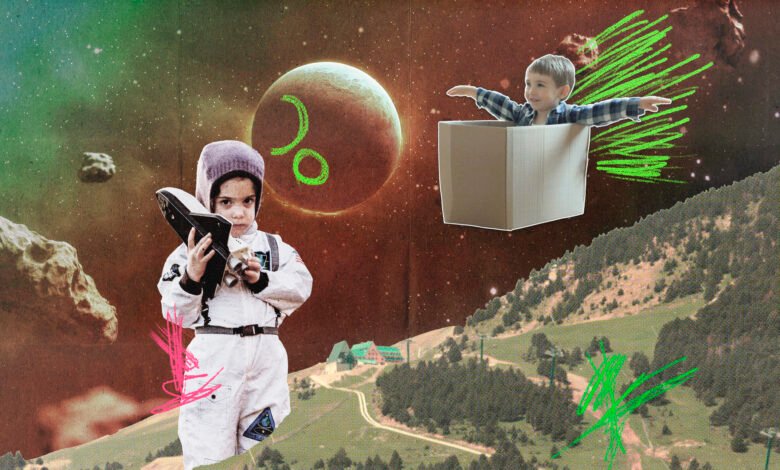Mopoga: Unraveling the Mystery of the Digital Age Phenomenon

In an era dominated by fleeting trends and viral sensations, “Mopoga” has emerged as a cryptic yet captivating force across digital landscapes. Neither a brand nor a conventional movement, Mopoga embodies the chaotic creativity of internet culture—a fusion of meme-driven absurdity, collaborative storytelling, and ironic self-awareness. Its name, whispered in niche forums and splashed across surreal social media edits, defies easy definition. Is it art? A social experiment? A collective inside joke? As we dissect Mopoga’s enigmatic layers, we uncover not just a viral curiosity, but a mirror reflecting the internet’s evolving psyche, where meaning is fluid and participation is the only true currency.
Headings & Explanations:
-
The Birth of Mopoga: Chaos as Catalyst
Mopoga didn’t launch with fanfare; it oozed into existence. Fragmentary traces suggest its origins in a 2023 collaborative ARG (Alternate Reality Game), where users worldwide solved glitchy puzzles yielding nonsensical phrases like “Mopoga ascends.” Early adopters weaponized ambiguity, seeding abstract animations and distorted audio clips tagged #Mopoga. This deliberate lack of lore became its lore—a blank canvas for digital natives weary of over-explained corporate virality. The phenomenon thrives on “anti-context”: the less sense it makes, the more aggressively it proliferates. -
Aesthetic Anarchy: Glitchcore Meets Digital Folklore
Visually, Mopoga rejects polish. Think corrupted VHS tapes colliding with AI-generated fever dreams: melting landscapes, pixelated entities with too many eyes, and neon-static text repeating “MOPOGA IS NOW.” This aesthetic isn’t random; it’s a rebellion against algorithmic sanitization. By embracing the “broken,” creators forge a new folk language—one where distorted visuals symbolize digital disillusionment. Mopoga’s art feels unearthed, not designed, echoing the internet’s subconscious. -
The Ritual of Participation: Memes as Sacred Texts
Mopoga’s “rules” are performative absurdity. Users don’t consume; they initiate. Rituals include:-
Data Corruption Ceremonies: Intentionally glitching personal photos using outdated software.
-
Oracle Bots: Twitter accounts spouting procedurally generated “Mopoga prophecies.”
-
Offline Graffiti: Stenciling the Mopoga glyph (a twisted trapezoid) in abandoned spaces.
These acts transform spectators into shamans, weaving personal meaning into the void. The mantra? “If you understand it, you’re doing it wrong.”
-
-
Mopoga’s Cultural Parasitism: Why Brands Fear It
Unlike sellable trends, Mopoga resists co-option. When a sneaker brand attempted a “Mopoga-inspired” campaign, users bombarded it with deepfakes of executives reciting absurdist poetry. Mopoga hijacks corporate language too—think fake product drops (“Mopoga Emotional Support USB Drive”) or satirical customer service bots. Its power lies in destabilization: a reminder that not everything online can be commodified. -
The Void Where Meaning Should Be: Psychological Pull
Psychologists note Mopoga’s resonance with Gen Z/Millennial anxiety. Its embrace of nonsense mirrors a coping mechanism for information overload; its collaborative chaos offers community without demands. By celebrating meaninglessness, participants paradoxically find relief from the pressure to “make sense” of a fractured world. It’s Dadaism for the doomscrolling generation.
Deep Dive: The Inescapable Gravity of Nonsense
Mopoga’s endurance stems from its vacuum-like nature. Where traditional movements demand belief (e.g., conspiracy theories) or identity (e.g., fandoms), Mopoga requires only playful surrender. There are no leaders, no manifestos—just a growing repository of user-spawned artifacts. A TikTok video might feature someone smearing neon mud on a public statue while chanting auto-tuned gibberish; a Reddit thread could dissect whether this “counts” as Mopoga. The ensuing debate is the point. Critics dismiss it as “post-ironic sludge,” yet miss its genius: in a landscape of curated personalities and hot takes, Mopoga is a sanctuary for the authentically unhinged. It weaponizes meaninglessness to critique the internet’s obsession with narrative, transforming confusion into a shared ritual. Its only consistency is inconsistency—a digital hydra where cutting off one head spawns ten more, each chanting the same cryptic refrain: “This means nothing. Now join in.”
FAQ
Q: Is Mopoga a cult?
A: Not unless absurdity is a deity. It has no doctrine, hierarchy, or end goal—only participatory chaos.
Q: How do I “join” Mopoga?
A: Create something intentionally confusing, tag it #Mopoga, and embrace interpretations you never intended. Bonus points for analog glitches.
Q: Isn’t this just art-school pretension?
A: It rejects the “art” label. Mopoga is equally a prank, a mood, and a social experiment. Accessibility is key: use a potato phone, not a DSLR.
Q: Why does it feel vaguely ominous?
A: Its aesthetic borrows from horror and conspiracy tropes to parody online paranoia. The dread is part of the joke.
Conclusion: The Beauty of the Empty Vessel
Mopoga is a Rorschach test for the digital age—a void we fill with our anxieties, humor, and creativity. It challenges the notion that virality requires a product, a lesson, or even a point. In its glorious nonsense, we find something unexpectedly pure: a space free from hot takes, algorithms, and the exhaustion of making sense. Mopoga’s greatest gift is its invitation to play without purpose, to create without critique, and to find connection in shared confusion. As the web grows increasingly templated, Mopoga’s chaotic heartbeat reminds us: sometimes, meaning is overrated.



